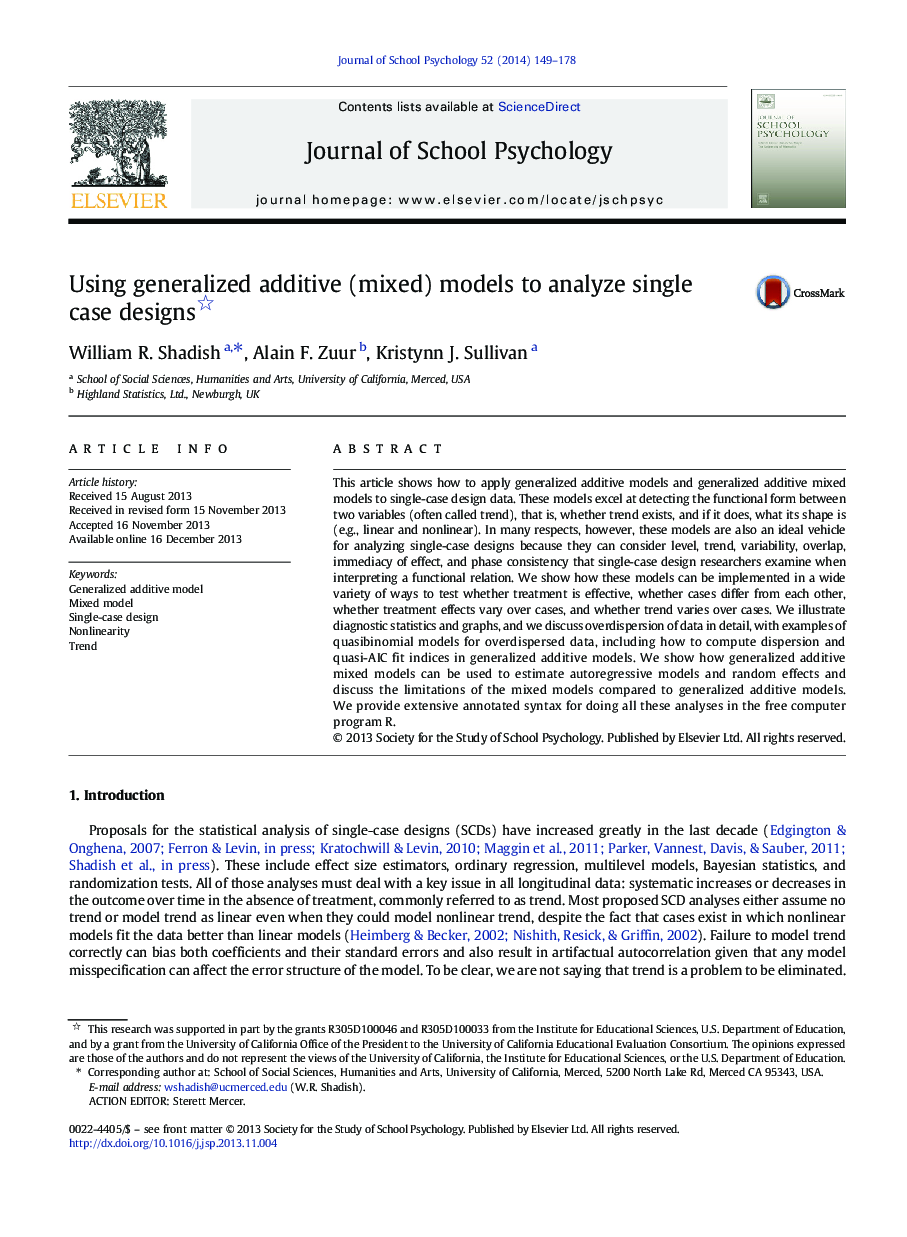| Article ID | Journal | Published Year | Pages | File Type |
|---|---|---|---|---|
| 363627 | Journal of School Psychology | 2014 | 30 Pages |
This article shows how to apply generalized additive models and generalized additive mixed models to single-case design data. These models excel at detecting the functional form between two variables (often called trend), that is, whether trend exists, and if it does, what its shape is (e.g., linear and nonlinear). In many respects, however, these models are also an ideal vehicle for analyzing single-case designs because they can consider level, trend, variability, overlap, immediacy of effect, and phase consistency that single-case design researchers examine when interpreting a functional relation. We show how these models can be implemented in a wide variety of ways to test whether treatment is effective, whether cases differ from each other, whether treatment effects vary over cases, and whether trend varies over cases. We illustrate diagnostic statistics and graphs, and we discuss overdispersion of data in detail, with examples of quasibinomial models for overdispersed data, including how to compute dispersion and quasi-AIC fit indices in generalized additive models. We show how generalized additive mixed models can be used to estimate autoregressive models and random effects and discuss the limitations of the mixed models compared to generalized additive models. We provide extensive annotated syntax for doing all these analyses in the free computer program R.
